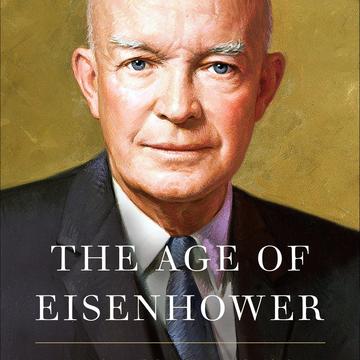McCarthyism and the Red Scare
In the end, President Eisenhower had no choice but to fight back against Senator Joseph McCarthy—and he did

In the early 1950s, American leaders repeatedly told the public that they should be fearful of subversive Communist influence in their lives. Communists could be lurking anywhere, using their positions as school teachers, college professors, labor organizers, artists, or journalists to aid the program of world Communist domination. This paranoia about the internal Communist threat—what we call the Red Scare—reached a fever pitch between 1950 and 1954, when Senator Joe McCarthy of Wisconsin, a right-wing Republican, launched a series of highly publicized probes into alleged Communist penetration of the State Department, the White House, the Treasury, and even the US Army. During Eisenhower’s first two years in office, McCarthy’s shrieking denunciations and fear-mongering created a climate of fear and suspicion across the country. No one dared tangle with McCarthy for fear of being labeled disloyal.
Any man who has been named by a either a senator or a committee or a congressman as dangerous to the welfare of this nation, his name should be submitted to the various intelligence units, and they should conduct a complete check upon him. It’s not too much to ask.
Senator Joseph McCarthy, 1953
It has long been a subject of debate among historians: Why didn’t Eisenhower do more to confront McCarthy? Journalists, intellectuals, and even many of Eisenhower’s friends and close advisers agonized over what they saw as Ike’s timid approach to McCarthyism. Despite his popularity and his enormous political capital, they believed, Ike refused to engage directly with McCarthy. By avoiding the Red-hunting senator, some have argued, Eisenhower allowed McCarthyism to continue unchecked.

By contrast, later scholars working from the documentary record perceived a design in Eisenhower’s strategy with McCarthy. Ike adopted an “indirect approach.” Instead of going right at McCarthy, Eisenhower worked behind the scenes to undercut and stymie the senator and his attacks. The political scientist Fred Greenstein, for example, argued that Eisenhower’s handling of McCarthy provides evidence of a “hidden hand” approach to government. In this interpretation, Ike rode above the fray of politics while secretly pulling levers and using White House influence to obstruct McCarthy and his allies.
President read my text with great irritation, slammed it back at me and said he would not refer to McCarthy personally—‘I will not get in the gutter with that guy.’
C. D. Jackson, Eisenhower speechwriter, 1953

Looking at all the evidence, the clearest conclusion is that Eisenhower did not want to confront Joe McCarthy at all. And during 1953, he tried to avoid the whole issue, hoping the Senate would silence the explosive senator. McCarthy was a Republican, after all, and many fellow senators supported him. Ike needed to keep his party unified to pass bills in other areas; battling McCarthy would only stir up a civil war inside the GOP.
Furthermore, Eisenhower did not want to appear “soft” on the problem of internal subversion. There had, after all, been real spies who penetrated into the State Department, notably Alger Hiss.

And Communist agents had stolen classified secrets from the wartime Manhattan Project that built the atomic bomb. When Julius and Ethel Rosenberg were condemned to die in the electric chair as punishment for their theft of atomic secrets, Eisenhower did not for a moment consider granting them clemency. On June 19, 1953, they were both put to death.
Eisenhower in 1953 improvised in dealing with McCarthy, at first trying to ignore him, then trying to outdo him in the Red-hunting business. Then he tried to seduce him with promises of new legislation to destroy Communism in America. None of these tactics worked.
‘The Age of Eisenhower,’ chapter 6

But at the start of 1954, the picture changed. Joe McCarthy turned his investigatory resources on the US Army and on members of the administration itself. Eisenhower had no choice but to fight back. The first move the White House made was to try to discredit the men around McCarthy, notably the lawyer Roy Cohn, who was leading the investigation, and Cohn’s assistant David Schine, who had recently been drafted into the Army.
The Army compiled a damaging dossier of dirt on Cohn, showing that he used threats and intimidation to demand that Schine be given plum assignments and easy duty. The White House leaked this dossier to the press and Congress. McCarthy and Cohn now stood accused of abuse of power.
Ike went one step further. In order to close down McCarthy’s reckless use of subpoenas to compel witnesses to testify before his committee, Eisenhower invoked executive privilege.

In May 1954, Ike simply said that administration officials and all executive branch employees would ignore any call from McCarthy to testify. Eisenhower explained his action, declaring that “it is essential to efficient and effective administration that employees of the executive branch be in a position to be completely candid in advising with each other on official matters,” without those conversations being subject to Congressional scrutiny.
It was a bold and daring move, and it worked. McCarthy, his credibility in tatters and now starved of witnesses, hit a brick wall—and his fellow senators turned against him. In early December 1954, the Senate passed a motion of condemnation, in a vote of 67 to 22. McCarthy was ruined—and within three years he was dead from alcohol abuse. The era of McCarthyism was over. Ike had helped bring it to a bitter end.





